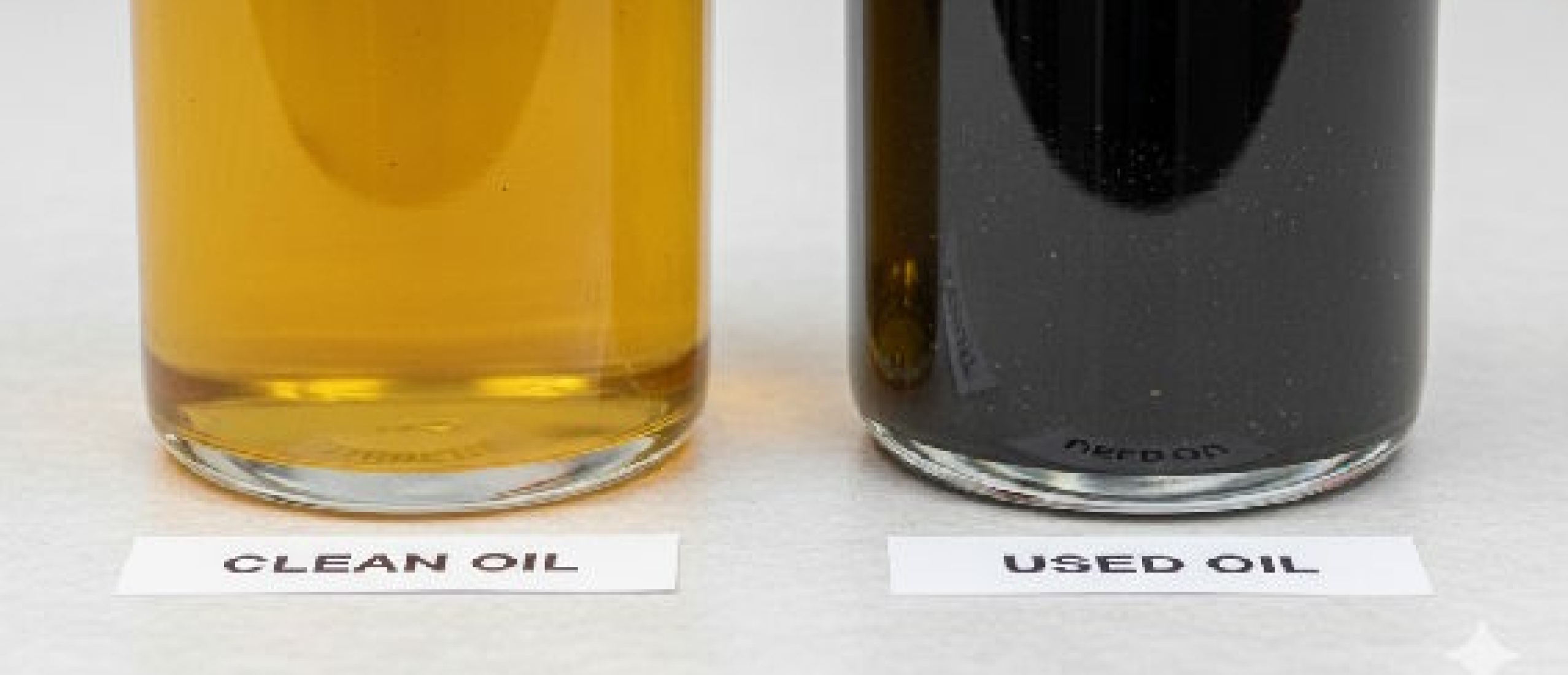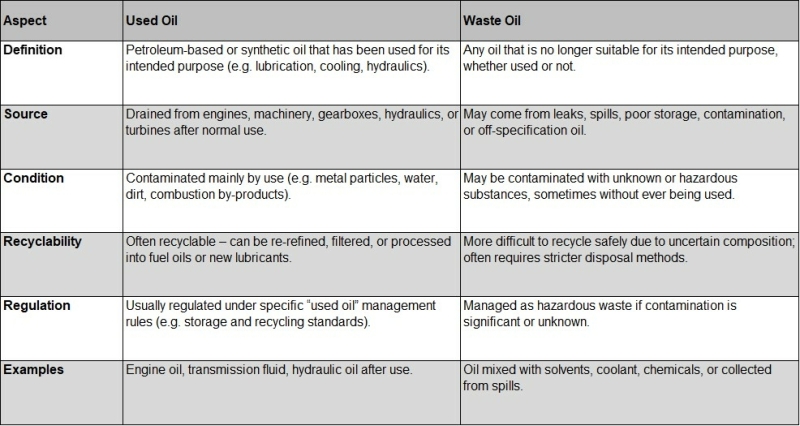
The difference between Used and Waste oil
Yes, there is a difference between used oil and waste oil, although the terms are often confused or used interchangeably in everyday conversation. The distinction mainly lies in origin, composition, and potential for reuse.
Used Oil
Definition: Used oil refers specifically to petroleum-based or synthetic oils that have been used as lubricants, hydraulic fluids, heat transfer fluids, or similar applications.
Condition: It has become contaminated with impurities (such as dirt, metal particles, water, or chemicals) as a result of normal use.
Examples: Engine oil drained from vehicles, gearbox oil, hydraulic oil, or lubricating oils after use.
Management: Because it originates from known applications, used oil can often be recycled, re-refined, or processed to create fuel oils or new lubricants.
Waste Oil
Definition: Waste oil is a broader term referring to any oil that is no longer suitable for its original purpose, whether it has been used or not.
Condition: It may be contaminated accidentally, degraded through improper storage, or mixed with hazardous substances.
Examples: Spilled oil mixed with water or chemicals, off-specification oil that was never used, or oily waste collected from industrial cleaning.
Management: Because its origin and composition are often uncertain, waste oil is usually treated as more hazardous. It may require stricter disposal methods and is not always suitable for recycling.
Key Difference:
Used oil is typically “dirty but predictable” and can often be recycled.
Waste oil is usually “unusable and uncertain” and often requires special disposal.
Summary

